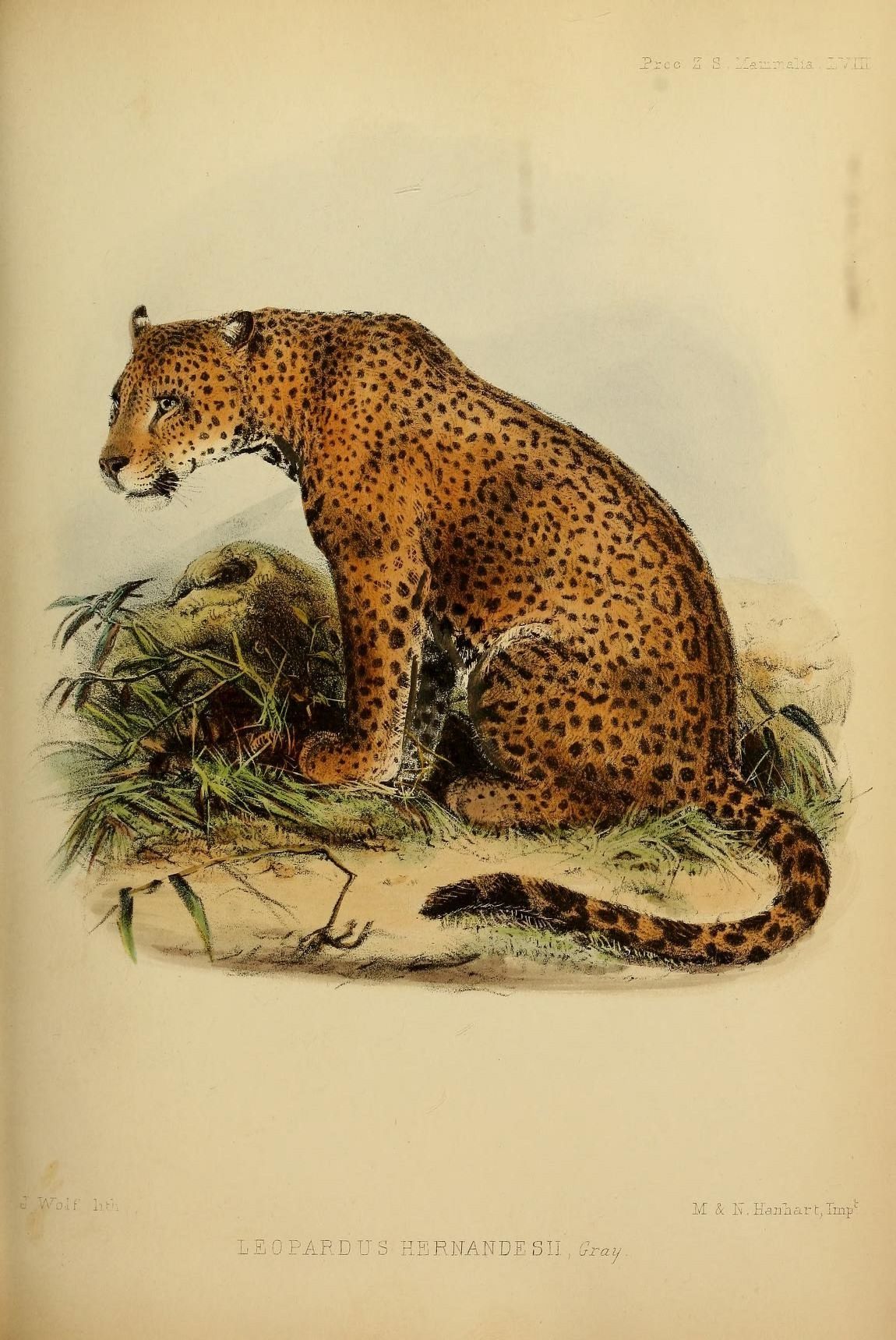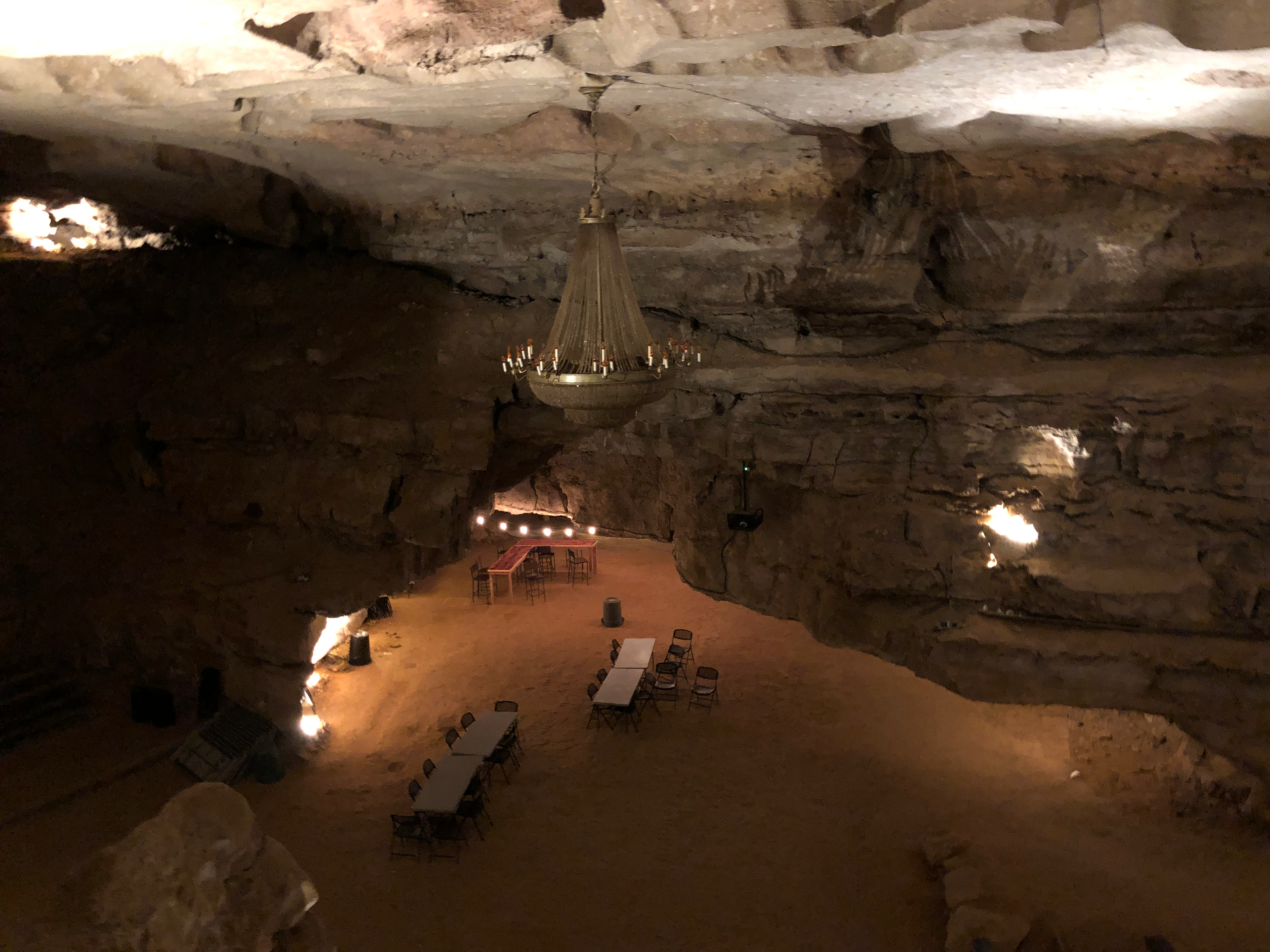|
Panthera Onca Augusta
''Panthera onca augusta'', commonly known as the Pleistocene jaguar or simply the giant jaguar, is an extinct subspecies of the jaguar that was endemic to North America during the Pleistocene epoch (1.8 mya–11,000 years ago). History and distribution Although '' P. onca'' still resides in the southern United States and several Native American tales possibly about ''P. onca augusta'' exist, the first published remains were described in 1872. The fossils were found by Ferdinand Vandeveer Hayden on the Platte River of Nebraska and sent to Joseph Leidy at the Academy of Natural Sciences in Philadelphia, who named them ''Felis augustus'' in 1872. The fossils consisted of a premolar IV and maxilla fragment, the type (USNM 1004), as well as another tooth and a distal humerus, though the humerus is likely that of ''Panthera atrox'' or ''Smilodon fatalis''. Leidy also mistakenly believed the fossils were from the Pliocene, but they actually come from the Pleistocene. Later in 1919, O ... [...More Info...] [...Related Items...] OR: [Wikipedia] [Google] [Baidu] |
Joseph Leidy
Joseph Mellick Leidy (September 9, 1823 – April 30, 1891) was an American paleontologist, parasitologist and anatomist. Leidy was professor of anatomy at the University of Pennsylvania, later was a professor of natural history at Swarthmore College and the director of scientific and educational programs at the Wagner Free Institute of Science. His book ''Extinct Fauna of Dakota and Nebraska'' (1869) contained many species not previously described and many previously unknown on the North American continent. At the time, scientific investigation was largely the province of wealthy amateurs. The Leidy Glacier in northwest Greenland was named by Robert Peary after him. Early life and family Joseph Leidy was born on September 9, 1823, to an established Philadelphia family of Pennsylvania Germans. His father, Philip, was a hatter; his mother, Catharine, died during childbirth when he was young. His father then married his wife's first cousin, Christiana Mellick. Leidy also ha ... [...More Info...] [...Related Items...] OR: [Wikipedia] [Google] [Baidu] |
Oliver Perry Hay
Oliver Perry Hay (May 22, 1846 – November 2, 1930) was an American herpetologist, ichthyologist, and paleontologist. Hay was born in Jefferson County, Indiana, to Robert and Margaret Hay. In 1870, Hay graduated with a bachelor of arts from Eureka College in Illinois. He taught at the college as a sciences professor from 1870–1873. He married Mary E. Howsmon of Eureka, Illinois, in 1870. He was a professor at Oskaloosa College in Iowa from 1874–1876. He was a student at Yale University from 1876–1877. Seventeen years after earning his bachelors, he earned his PhD from Indiana University in Bloomington, Indiana. From 1877–1879, he taught at Abingdon College just before it was incorporated into his alma mater, Eureka College. His longest professorship was at Butler University from 1879–1892. From 1894 to 1895, he worked at the Field Museum of Natural History as assistant curator of zoology, where despite his specialty in ichthyology, he worked in all nonornithological f ... [...More Info...] [...Related Items...] OR: [Wikipedia] [Google] [Baidu] |
North American Jaguar
The North American jaguar is a jaguar (''Panthera onca'') population in North America, ranging from the southwestern United States to Central America. This population has declined over decades and was almost eliminated by 1960. Results of morphologic and genetic research failed to find evidence for subspecific differentiation. This population is also referred to as the "American jaguar" and "Central American jaguar". Taxonomic history Initially, a number of jaguar subspecies were described: * The taxonomic name ''Panthera onca goldmani'' (Mearns, 1901) was proposed as ranging from the Yucatán Peninsula in Mexico, in the north, to Belize and Honduras in the south. * ''Panthera onca hernandesii'' (Mearns, 1901) was proposed as native to Mexico and the United States of America. * ''Panthera onca veraecruscis'' (Nelson and Goldman, 1933) was proposed as ranging from Tabasco in Mexico to Texas in the United States. * ''Panthera onca arizonensis'' (Goldman, 1932) was proposed w ... [...More Info...] [...Related Items...] OR: [Wikipedia] [Google] [Baidu] |
Panthera Gombaszoegensis
''Panthera gombaszoegensis'', also known as the European jaguar, is a ''Panthera'' species that lived from about 2.0 to 0.35 million years ago in Europe. The first fossils were excavated in 1938 in Gombasek, Slovakia. More of its fossil remains were excavated from the Olivola site in Italy, while finds elsewhere in Italy were initially named ''Panthera toscana''. Later fossils were found in England, Germany, Spain, France, and the Netherlands. Sometimes it is recognized as a subspecies of ''Panthera onca'', the jaguar, as ''Panthera onca gombaszoegensis.'' Description European jaguars were larger than modern-day jaguars found in South America, such as Pantanal and Peruvian jaguars. With a bodyweight between 70 and 210 kg (154 to 463 lbs), they were therefore probably capable of bringing down larger prey. Like other ''Panthera'' species, they are thought to have been sexually dimorphic, with significantly larger males. History The ancestors of jaguars are thought to ... [...More Info...] [...Related Items...] OR: [Wikipedia] [Google] [Baidu] |
Panthera Onca Mesembrina
''Panthera onca mesembrina'' is an extinct subspecies of the jaguar that was endemic to southern South America during the Pleistocene epoch (1.8 mya–11,000 years ago). Its fossils have been excavated primarily in Argentina and Chile, though few fossils are known. Genetic analysis in 2016 showed that ''P. onca mesembrina'' was in an extinct sister lineage to extant ''Panthera onca'' species based on genetic evidence, and is the largest known subspecies of jaguar. History and taxonomy In the 1890s in the “Cueva del Milodon” in southern Chile, fossil collector Rodolfo Hauthal collected a fragmentary postcranial skeleton of a large Felid that he sent to Santiago Roth who described them as a new genus and species of Felid, "Iemish listai", in 1899, though the name is considered a nomen nudum. 5 years later in 1904, Roth reassessed the phylogenetic affinities of “Iemish” and moved the species to ''Felis,'' referring several cranial and fragmentary postcranial elements to ... [...More Info...] [...Related Items...] OR: [Wikipedia] [Google] [Baidu] |
Chapala, Jalisco
Chapala () is a town and municipality in the central Mexican state of Jalisco, located on the north shore of Lake Chapala, Mexico's largest freshwater lake. According to the 2015 census, its population is 50,738 for the municipality. The municipality includes about 11,000 in the town of Ajijic. Geography Chapala is 28 miles (45 km) south-southeast of Guadalajara, on Mexican Federal Highway 44. It is located at 20°20' North, 103°10' West. Climate History Although there are several theories as to the origin of the city's name, the most likely is that it comes from Chapalac, the name of the last chief of the Nahuatl-speaking indigenous people of the region. Chapala became an official municipality on September 10, 1864, by decree of the Jalisco State Congress. Culture During the First World War, in 1915, Norwegian speculators intended to make Chapala a luxury resort town. A railway was to be built, with race segregated carriages. In addition to the railway, the spe ... [...More Info...] [...Related Items...] OR: [Wikipedia] [Google] [Baidu] |
La Brea Tar Pits
La Brea Tar Pits is an active paleontological research site in urban Los Angeles. Hancock Park was formed around a group of tar pits where natural asphalt (also called asphaltum, bitumen, or pitch; ''brea'' in Spanish) has seeped up from the ground for tens of thousands of years. Over many centuries, the bones of trapped animals have been preserved. The George C. Page Museum is dedicated to researching the tar pits and displaying specimens from the animals that died there. La Brea Tar Pits is a registered National Natural Landmark. Formation Tar pits are composed of heavy oil fractions called gilsonite, which seeps from the Earth as oil. Crude oil seeps up along the 6th Street Fault from the Salt Lake Oil Field, which underlies much of the Fairfax District north of Hancock Park. The oil reaches the surface and forms pools, becoming asphalt as the lighter fractions of the petroleum biodegrade or evaporate. The asphalt then normally hardens into stubby mounds. The pools and mou ... [...More Info...] [...Related Items...] OR: [Wikipedia] [Google] [Baidu] |
The Oregonian
''The Oregonian'' is a daily newspaper based in Portland, Oregon, United States, owned by Advance Publications. It is the oldest continuously published newspaper on the U.S. west coast, founded as a weekly by Thomas J. Dryer on December 4, 1850, and published daily since 1861. It is the largest newspaper in Oregon and the second largest in the Pacific Northwest by circulation. It is one of the few newspapers with a statewide focus in the United States. The Sunday edition is published under the title ''The Sunday Oregonian''. The regular edition was published under the title ''The Morning Oregonian'' from 1861 until 1937. ''The Oregonian'' received the 2001 Pulitzer Prize for Public Service, the only gold medal annually awarded by the organization. The paper's staff or individual writers have received seven other Pulitzer Prizes, most recently the award for Editorial Writing in 2014. ''The Oregonian'' is home-delivered throughout Multnomah, Washington, Clackamas, and Yamhill ... [...More Info...] [...Related Items...] OR: [Wikipedia] [Google] [Baidu] |
American Museum Of Natural History
The American Museum of Natural History (abbreviated as AMNH) is a natural history museum on the Upper West Side of Manhattan in New York City. In Theodore Roosevelt Park, across the street from Central Park, the museum complex comprises 26 interconnected buildings housing 45 permanent exhibition halls, in addition to a planetarium and a library. The museum collections contain over 34 million specimens of plants, animals, fossils, minerals, rocks, meteorites, human remains, and human cultural artifacts, as well as specialized collections for frozen tissue and genomic and astrophysical data, of which only a small fraction can be displayed at any given time. The museum occupies more than . AMNH has a full-time scientific staff of 225, sponsors over 120 special field expeditions each year, and averages about five million visits annually. The AMNH is a private 501(c)(3) organization. Its mission statement is: "To discover, interpret, and disseminate—through scientific research and ... [...More Info...] [...Related Items...] OR: [Wikipedia] [Google] [Baidu] |
Saltpeter Cave
Saltpeter Cave, in Carter Caves State Resort Park near Olive Hill, Kentucky. It was listed on the National Register of Historic Places in 2001. It has also been known as Swingle's Cave and as Swindell's Cave. It is a limestone cave with of measured length. It has served as a saltpeter, or niter, mine, by the early 1800s. It has been believed, by local tradition, that niter mined from the cave was used to make gunpowder for the War of 1812, including supplying for the 1815 Battle of New Orleans. With . The cave entrance is gated by a "limestone block and iron bar structure, resembling a jail cell", which was built in the mid-1900s. The cave was developed for use by bats. The cave is unique in that it is a hibernaculum for the endangered Indiana Bat The Indiana bat (''Myotis sodalis'') is a medium-sized mouse-eared bat native to North America. It lives primarily in Southern and Midwestern U.S. states and is listed as an endangered species. The Indiana bat is grey, black, o ... [...More Info...] [...Related Items...] OR: [Wikipedia] [Google] [Baidu] |
Craighead Caverns
Craighead Caverns is an extensive cave system located in between Sweetwater and Madisonville, Tennessee. It is best known for containing the United States' largest and the world's second largest non- subglacial underground lake, The Lost Sea. In addition to the lake, the caverns contain an abundance of crystal clusters called anthodites, stalactites, stalagmites, and a waterfall. History Located in the foothills of the Great Smoky Mountains, the caverns are named after their former owner, a Cherokee Native American, Chief Craighead. The caverns were used by the Cherokee as a meeting place for their councils. During the American Civil War, the caves were mined by Confederate soldiers for saltpeter, a commodity necessary to the manufacture of gunpowder. The major cave and lake area was also used as a hideout for moonshiners, especially during the Prohibition era. In 1939, explorers found the fossilized remains of a Pleistocene jaguar. The persons who made the discovery w ... [...More Info...] [...Related Items...] OR: [Wikipedia] [Google] [Baidu] |
Cumberland Caverns
Cumberland Caverns is a national natural landmark and show cave located in McMinnville, Tennessee. It is the second longest cave in Tennessee and makes the list of longest caves in the United States and in the world. History The main entrance was discovered by Aaron Higgenbotham in 1810 while he was surveying the nearby Chickamauga Trail on Cardwell Mountain in what is now Warren County. According to legend, Higgenbotham was the first man to enter the cave and it was named Higgenbotham Cave in his honor. Another smaller cave, also located on Cardwell Mountain, was also discovered about this time and was named Henshaw Cave. Although not nearly as big as Higgenbotham Cave, Henshaw Cave proved to be a source of saltpeter (the main ingredient of gunpowder) and was operated as a saltpeter mine during perhaps both the War of 1812 and the Civil War. Higgenbotham Cave became a favorite spot for local adventurers during the 19th century and groups would ride out to the entrance in hay ... [...More Info...] [...Related Items...] OR: [Wikipedia] [Google] [Baidu] |



.jpg)




